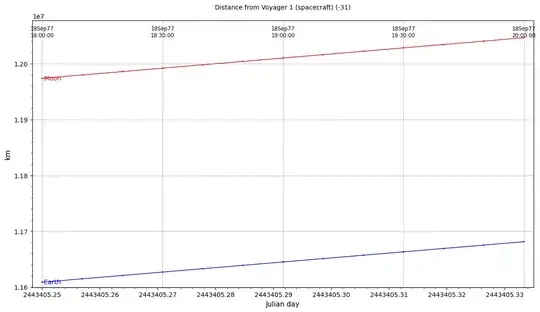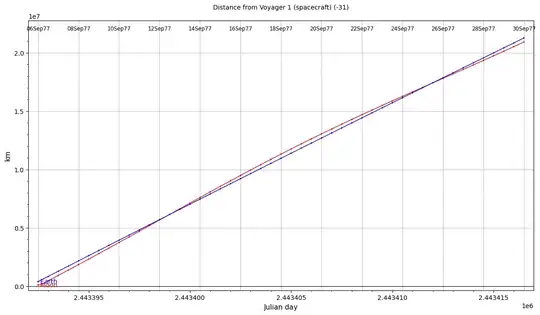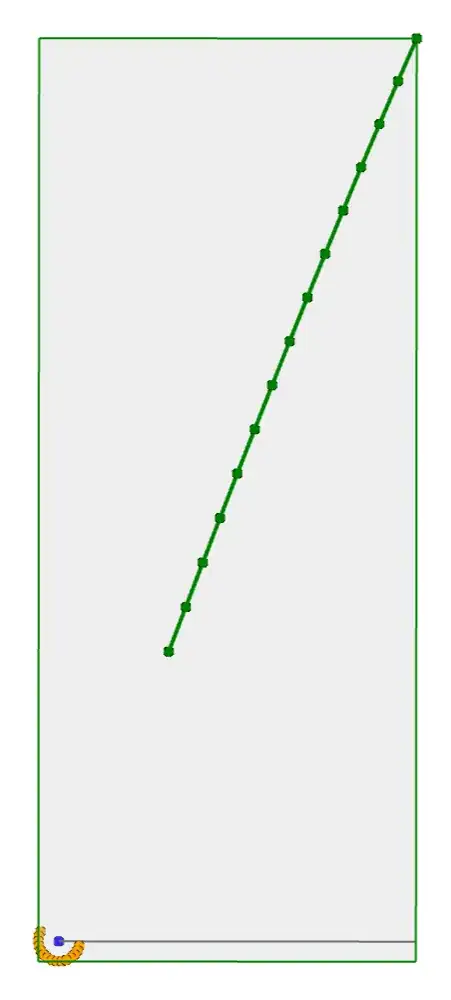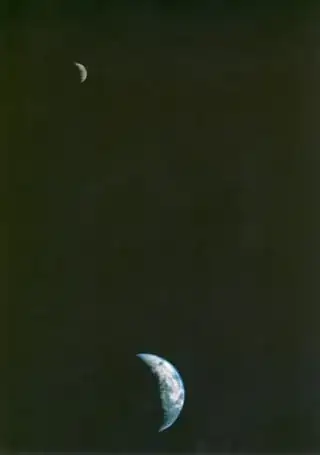The Earth was closer.
I can't find the time when that picture was taken. That NASA press release is dated Sep 19, 1977, but the consensus seems to be that the photo was taken around the 18th of September.
However, they do say that Voyager 1 was around 11.66 million km from the Earth at the time of the photo, which puts it around 1977-Sep-18 19:30 UTC, according to Horizons.

At that time, the distance from Voyager 1 to the Moon was ~12.03 million km.
Here's my plotting script.
Here are direct links for the raw Horizons data:
Earth
Moon
FWIW, here's a plot for September, starting about 10 hours after launch.

So Voyager 1 was equidistant from the Earth & Moon some time around the 12th and the 26th.
Update
Here's a plot of the trajectories of the Moon (orange) and Voyager 1 (green) relative to the Earth (blue) over that time interval, with a time step of 1 day. Hopefully, this plot makes it clear that Voyager was closer to the Earth than to the Moon during that interval.

The frame is the ICRF, essentially the J2000.0 frame. The XY plane is (parallel to) the J2000 ecliptic, and the grey line emanating from the Earth is parallel to the ICRF X axis, and points towards the J2000 First Point of Aries (the March equinox point). We're looking "down" from north of the ecliptic. The Moon is moving anticlockwise. Voyager is moving at quite a speed, so in one day it traverses a distance equal to the diameter of the Moon's orbit. It's above the ecliptic, moving north.
You can see an interactive 3D view in this orbit plotting script.
That script can be used to create trajectory plots of any number of bodies that Horizons knows about. Any major body can be the center, and some minor bodies can be too. Use the SSD Small-Body Database Lookup tool to get the official name or SPKID for small bodies. Major body SPKIDs can be found here. Please see the Horizons manual for further info, including info on specifying dates and time steps.
palette colours may be specified using standard X11 / Web colour names, or 3 or 6 digit hex codes, eg #F00 or #FF0000 is bright red.
Separate body names / ids and palette colours with commas. You can give more colours than bodies, if you don't supply a colour for a body it will not be plotted.
To disable the plotting of labels, set label_step to 0.
If you select the perspective plotting mode you may need to increase the dot size value considerably.
The program maintains a cache of its last 20 queries of Horizons data, so if you only change "cosmetic" options the plot can be generated without re-fetching the data from Horizons.
Here are the 3D interface controls.
- Orbit - right mouse, or left mouse + ctrl/meta/shiftKey
- Zoom - middle mouse, or mousewheel
- touch: two-finger spread or squish
- Pan - left mouse, or arrow keys
Here's an enhanced version of that script, which allows you to select the orientation of the XY plane. The default is Ecliptic, the other options are Frame for the J2000 Earth equatorial plane, or Body Equator, for the equatorial plane of the central body. In all cases, the actual plane plotted is the plane parallel to the selected plane which passes through the center body.
I set the defaults to show Uranus and a few of its moons, since the Uranus equatorial plane is quite tilted relative to the ecliptic and to Earth's equator.





Either way, must an Answer rely on the information contained in the picture, or is external data such as the known sizes or positions of Earth and Moon to be considered?
– Robbie Goodwin Jul 09 '22 at 22:57